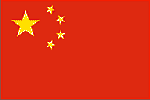 |
 |
China targets the Achilles-heel of Capitalism
By : Jim Pinto, Chinese planners recognize the demand for short-term profit as the Achilles-heel of Capitalism. So they offer products at very low gross-profit margins and have become the world leader in low-price manufacturing of high-volume products. Their own primary objectives are rapid local employment and long-term global market share.

ISA InTech - The Final Say, April 2008
|
 China had attained pre-eminence in global manufacturing. In recent years the manufacturing sector has been growing so quickly that China is set to exceed output in the U.S. manufacturing sector in the foreseeable future.
China had attained pre-eminence in global manufacturing. In recent years the manufacturing sector has been growing so quickly that China is set to exceed output in the U.S. manufacturing sector in the foreseeable future.
In the early 1990s, China was seen as simply a low cost place to make labor-intensive products. But now China is advancing quickly up the value chain, adding state-of-the-art production capacity in cars, specialty steel, petrochemicals, and microchips. Indeed, there are technically advanced manufacturing processes for which China is deemed superior to the U.S. With China’s entry into the World Trade Organization (WTO) in 2001, the game has intensified. The country with the world’s largest population is set to become an even more powerful force in global production. Pricing AsymmetryPrices for Chinese manufactured goods are typically half of comparable U.S. and European products and this continues to give China a strong competitive advantage, causing financial and manufacturing resource shifts. It’s important to recognize that lower selling-price is not simply the result of low-cost labor. There’s a fundamental difference in the cost structure that is the root cause of the price-differential.Today's world has three business models:
In the U.S, gross-profit margins of about 60% typically result in a target net pre-tax profit of 15-20%. In many other countries, a gross-profit of 40% results in net profit of 5-10% which is considered acceptable. In China, the net-profit is often zero. This astounds most outside observers – how can a profit-making enterprise survive (capital and cash-flow) with no profit? The answer: In China, short- and medium-term operating deficits are acceptable since capital is manipulated and controlled by the government. Chinese planners recognize the demand for short-term profit as the Achilles-heel of Capitalism. Their own primary objectives are rapid local employment and long-term global market share. Here’s another key point: China mandates disclosure of all intellectual property, demonstrating yet again the long-term perspectives. The Chinese see this as a priority which will help them attain long-term technology and market leadership goals. By contrast, foreign outsourcers are giving away knowledge and intellectual property for short-term financial gain. The results are evident in China's ongoing economic transformation which is having a profound impact not only on China, but on the world. For America, the remedies require significant attitude shifts. Our short-term financial mind-set must change. Business needs to realize that continual quarter-to-quarter increases in revenue and profits cannot be sustained with work that is done elsewhere in the world. Our society must recognize that manufacturing and job creation are not just political or business manipulations, but the building blocks of society. It's important to keep investing in jobs, to upgrade factories, to be competitive in global markets. Entrepreneurship and talent must be encouraged and stimulated to thrive in the manufacturing sector. Whoever makes things better, cheaper, faster – wins! America must continue to be the leader, or slide backwards into mediocrity. 
|
 Pinto's Points How to win in the Automation Business Go shopping - books, electronics, CD/DVD Selected advertising coming here. Contact Jim Pinto for rates. |
Return to Index of all JimPinto Writings

 Return to JimPinto.com HomePage
Return to JimPinto.com HomePage
If you have ideas or suggestions to improve this site, contact: webmaster@jimpinto.com
Copyright 2006 : Jim Pinto, San Diego, CA, USA
